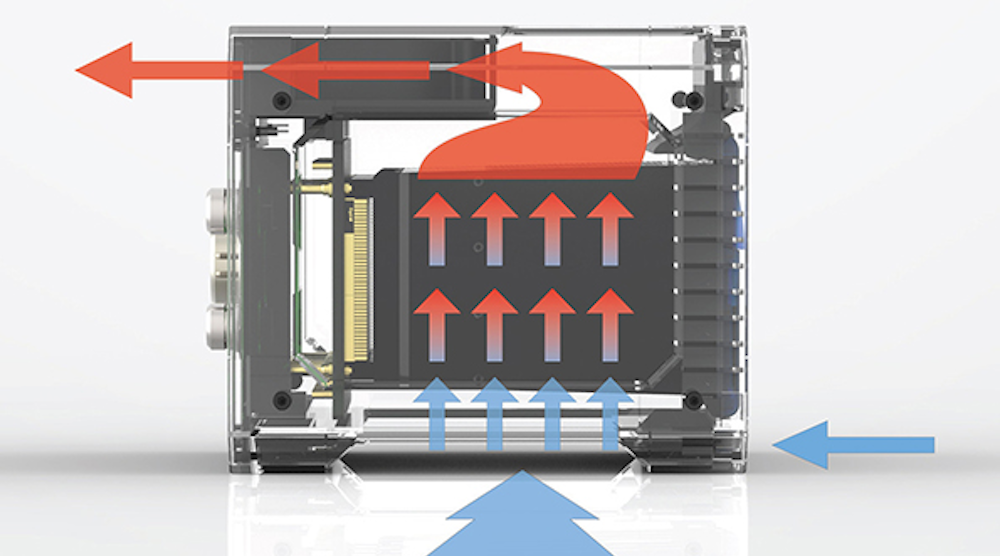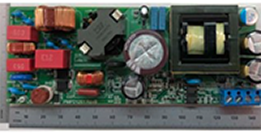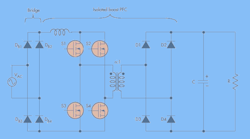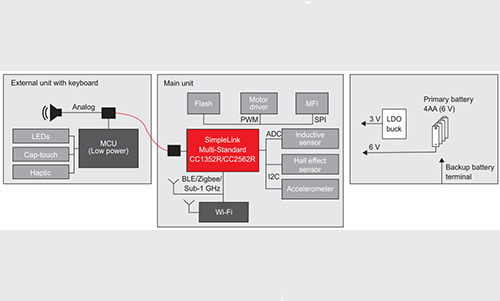|
|
Download this article in .PDF format 此文件类型在适用时包括高分辨率图形和原理图。 |
Cooling is always a challenge in rugged embedded applications, especially military applications. Air-cooled systems tend to be easier to work with, but often do not have the cooling capacity of conduction-cooled systems. It is also not a great idea to just blow air across components as in a conventional PC or laptop, given the rugged target environment.
The emergingVITA48.8 Air Flow Through (AFT) standard aims to keep 3U and 6U VPX systems cooler with more efficient air cooling while still enclosing the boards. A typical system would have air flowing up between boards in the system(Fig. 1). The spacing is the key as the actual air flow is something that can be done on a per-system basis. More novel design flows can be critical to the success of rugged system designs that may be deployed in compact drones or other aircraft.
SWAP-C (size, weight, power and cost) is the watchword for rugged embedded systems and VITA 48.8 is designed to address the high power densities (as high as 200 W per square centimeter) that are being seen in the aerospace and defense industries. VITA 48.8 allows heatsinks to be attached directly to metal sidewalls on both sides of the board. The sidewalls are air cooled in addition to protecting the components on the interior. The approach also allows VITA 57 mezzanine cards to be incorporated into the cooling framework.
模块系统通过消除在坚固的VPX系统上常见的wedgelocks和弹射器/喷油器手柄来遵循接吻原理(来自美国海军表达“保持简单,愚蠢”)。除了简化系统设计外,这还减少了成本和重量。
Curtiss-Wright Defense Solutionsrecently displayed a functional prototype implementation(Fig. 2)of VITA 48.8 at the 2016 Embedded Tech Trends conference. Ivan Straznicky, Curtiss-Wright Defense Solutions CTO & Technical Fellow, Chair of the VITA 48.8 working group, noted, “VITA 48.8 will cool high-power and high-power-density modules. For example, Curtiss-Wright has analyzed and designed AFT for 3U modules with high heat density processors and a total of 70W on a basecard, plus 25-30W on mezzanine cards, for a total of 95-100W.”
The standard does not use module-to-chassis conduction cooling. This allows the chassis to be made of different materials such as lightweight plastic or composite materials. The demonstration chassis was actually built using a 3D printer.
















_linear_regulators.png?auto=format&fit=crop&h=139&w=250&q=60)


